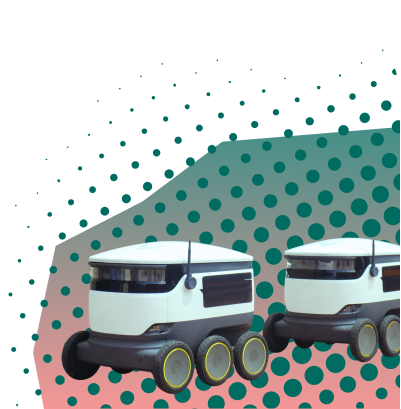What is Green Software?
 Technology is quickly becoming the driving force behind everything. Software is driving that change and will soon be responsible for every corner of our lives, from commuting and storing data to starting a family and issuing financial transactions.
Technology is quickly becoming the driving force behind everything. Software is driving that change and will soon be responsible for every corner of our lives, from commuting and storing data to starting a family and issuing financial transactions.
Software also plays a vital role in accelerating the global energy transition. This technology, named green software, is created and used in a way that guarantees optimum energy efficiency and has little to no environmental impact. Its design, development, and deployment all take into account its carbon footprint, which creates new opportunities for achieving digital sustainability.
Ultimately, the benefits of a higher-quality product that is leaner, cleaner and more fit for its purpose outrival the early scrutiny of building this new software. It will help large companies meet their ESG targets in their transition to a sustainable future, an increasingly important performance measure for stakeholders, whilst research has shown engineers are increasingly reviewing a company’s focus on sustainability when choosing their next employer.
With the GreenTech market experiencing hyper-growth, software addresses the challenges towards the energy transition, accelerating industry growth even further, enhancing self-determination and reducing reliance on fossil fuels.
The Principles Of Green Software
The following are the eight principles of green software development.
-
Carbon
Being efficient means reducing the amount of carbon released into the atmosphere per unit of work. For the purposes of software development, this translates into building applications that bring the same or better value to users while emitting less carbon.
-
Electricity
All software, from applications to data centres, consumes electricity in its execution. Green software is responsible for the electricity it consumes and is mindful to consume as little as possible.
-
Carbon Intensity
Carbon intensity measures how much carbon emissions are generated per kilowatt-hour of electricity consumed. Green software aims to minimize carbon intensity by consuming as much electricity from renewable sources as possible while developing and running software.
-
Embodied Carbon
As the embodied carbon cost of consumer devices is considerably higher than their lifetime electricity consumption, green software aims to keep emissions to a minimum by building hardware-efficient applications.
-
Energy Proportionality
Referring to the balance of utilization on computer systems, green software seeks to maximise a system’s energy efficiency by using as few servers as possible with a high utilization rate.
-
Networking
The internet is a vast, connected space, through which data travels through multiple networks to get from A to B. Each of these devices has embedded carbon and consumes electricity. To counteract this, green software aims to be more energy efficient by reducing the size of the data and the distance it travels across the network.
-
Demand Shaping
Demand shaping is building carbon-aware applications to shape demand, dependent on the time, region or availability of supply. A great example of this is video conferencing software, which shapes demand by reducing the video quality while prioritizing the audio quality, instead of always streaming at the highest quality.
-
Measurement and Optimization
By understanding the full tech stack, user experience, data center layout, electricity grids and more, green software focuses on incremental improvements that enhance total carbon performance.
The Benefits Of Green Software Development
With the urgency for governments, corporations and individuals to revoke the growing climate crisis of our generation, the GreenTech market is suffering from a greater need for speed and flexibility. Green software can meet this demand by providing agile solutions across different sectors to achieve sustainability and transform the planet.
Unlike hardware, software represents an affordable and scalable form of investment. In recent years, software development has had its own time to shine as a growing trend, expecting to become more prevalent than traditional technology methods in order to cut wastage and improve productivity and coverage over time.
With urgency prevailing and investment picking up, all eyes are focused on green technologies becoming the key to unlocking a sustainable future. As such, the market for green software has ballooned. In order to stay competitive, many corporations have invested in green software to fit their growing desires to ‘go green’.
Software advancement, in general, has streamlined technology’s role in reducing greenhouse gas emissions. A culmination of enabling technologies, infrastructures of software development and gadgets being developed by partners like Tesla Motors collectively reduce carbon emissions and are poised to shift how much electricity is used in industry and how it is allocated across the grid.
The Companies Turning Green With Green Software
There has been a huge stride in large tech companies communicating their intention of becoming climate-neutral. And their accomplishments thus far are something to shout about.
With 187 solar and wind projects worldwide and plans to power all of its activities with renewable energy by 2025, Amazon overtook the competition to become the largest corporate buyer of renewable energy in the world in December 2020. Google claims that its data centres consume around half the energy of a conventional data centre and they have been carbon neutral since 2007.
Global initiatives in the private sector to promote sustainable software have also been launched. Recently, Microsoft initiated the Green Software Foundation, together with the Linux Foundation. The goal is to build an ecosystem of people, standards, tooling, and practices to reduce carbon emissions caused by software development. One of their activities will be to develop a certification scheme and training courses for green software developers, whilst another concerns the development of standards for the software industry as a whole. The declared target is to reduce greenhouse gas emissions by 45% by 2020, in accordance with the Paris Climate Agreement.
Takeaway
Green software is an emerging discipline that focuses on defining, creating and maintaining sustainable software systems. Green software is used to create applications that are more efficient, effective, resilient, and well-optimized.
At Storm4, we partner with startups at the cutting edge of green innovation to help them scale and meet their mission of a sustainable future. If you are at the cusp of hyper-growth and need advice and support in building your teams, get in touch today.











